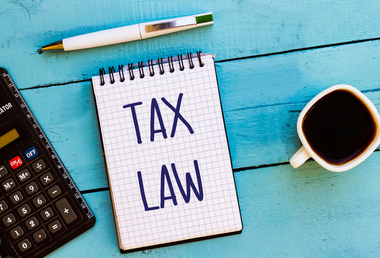Rules regarding expensing and deduction are complex and managers should keep an eye on the latest rules to ensure their businesses are in compliance and are taking full advantage of the provisions. This article can be used as a reference to the newest expensing rules.
First off, businesses can immediately expense more under the new law and they may elect to expense the cost of any section 179 property and deduct it in the year the property is placed in service. When you elect to expense the cost of any section 179 property, the maximum deduction is increased from $500,000 to $1 million under the new tax law. The phaseout threshold is similarly expanded from $2 million to $2.5 million. And for taxable years beginning after 2018, these amounts will be adjusted for inflation. The tax law opens the definition of section 179 property to allow taxpayers to elect to include the following improvements made to nonresidential real property after the date the property was first placed into service:
Qualified improvement property.
Any improvement to a building’s interior. However, improvements don’t qualify if they’re attributable to the enlargement of the building, any elevator or escalator, or the internal structural framework of the building.
Roofs, HVAC, and any system for fire protection, alarms and security.
These changes apply to property placed in service in taxable years after Dec. 31, 2017.
The new tax law also raises the bonus depreciation from 50 percent to 100 percent for qualified property acquired and placed into service after Sept. 27, 2017, and before Jan. 1, 2023. The bonus depreciation for qualified property acquired before Sept. 28, 2017, and placed in service before Jan. 1, 2018, remains at 50 percent. Special rules apply for longer production period property and certain aircraft. Your property will be eligible for 100 percent bonus depreciation, including used qualified property acquired and placed in service after Sept. 27, 2017, if all of the following factors apply:
- The taxpayer or predecessor didn’t use the property at any time before acquiring it.
- The taxpayer didn’t acquire the property from a related party.
- The taxpayer didn’t acquire the property from a component member of a controlled group of corporations.
- The taxpayer’s basis of the used property is not figured in whole or in part by reference to the adjusted basis of the property in the seller’s or transferor’s hands.
- The taxpayer’s basis of the used property is not figured under the provision for deciding basis of property acquired from a decedent.
- The cost of the used property eligible for bonus depreciation doesn’t include the basis of property determined by reference to the basis of other property held at any time by the taxpayer. An example would be in a like-kind exchange or involuntary conversion.
Under the new tax law, certain types of property aren’t eligible for bonus depreciation in any taxable year after Dec. 31, 2017. This exclusion applies if the rates for the furnishing or sale have to be approved by a federal, state or local government agency, a public service or public utility commission, or an electric cooperative. For example, an exclusion from qualified property is property primarily used in the trade or business of the furnishing or sale of:
- Electrical energy, water or sewage disposal services.
- Gas or steam through a local distribution system.
- Transportation of gas or steam by pipeline.
The new tax law has also eliminated qualified improvement property acquired and placed in service after Dec. 31, 2017, as a specific category of qualified property. This is just an introduction to a highly technical topic. Managers would do well to keep in close touch with financial professionals about their expensing and deduction situations.


